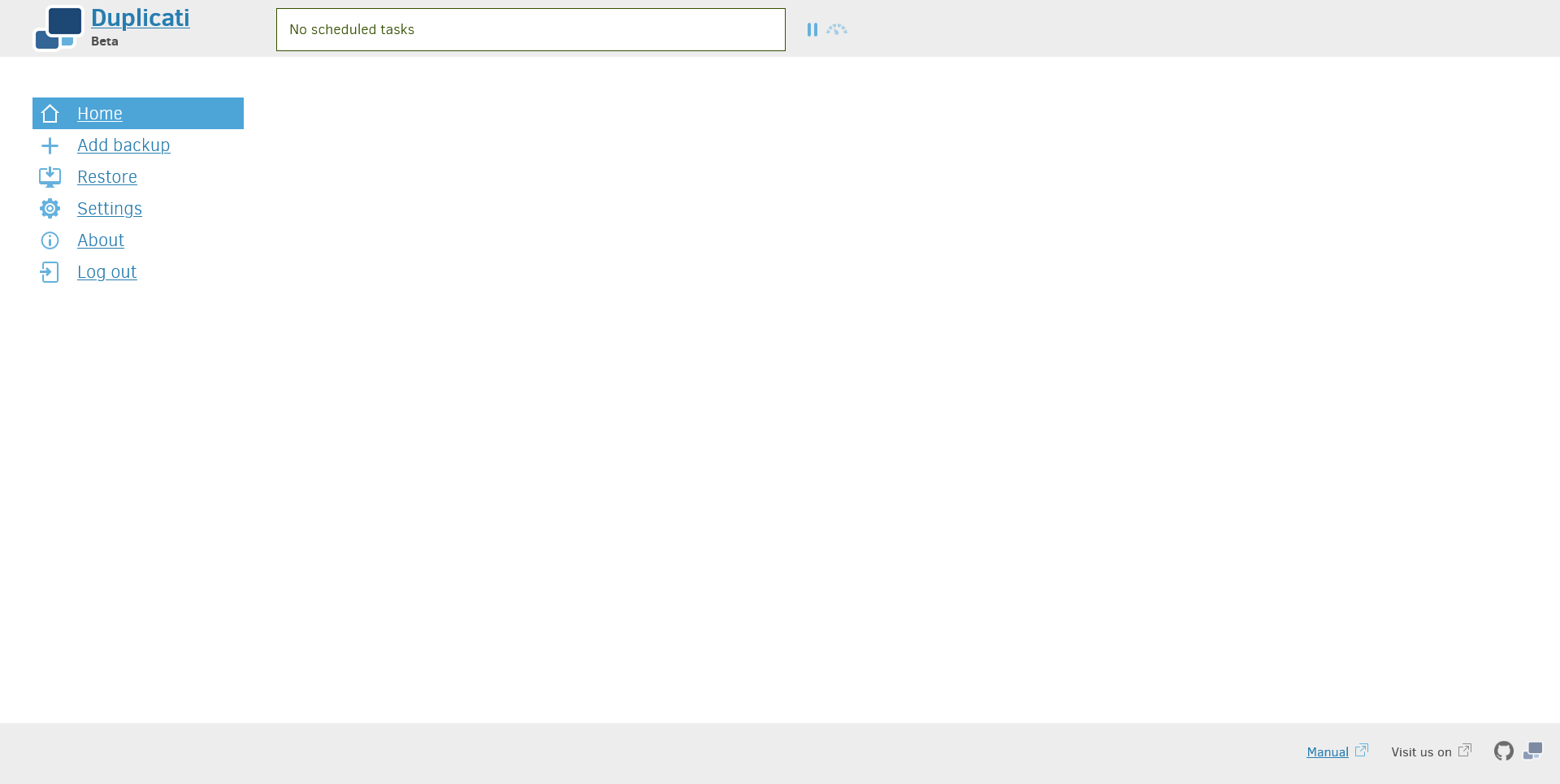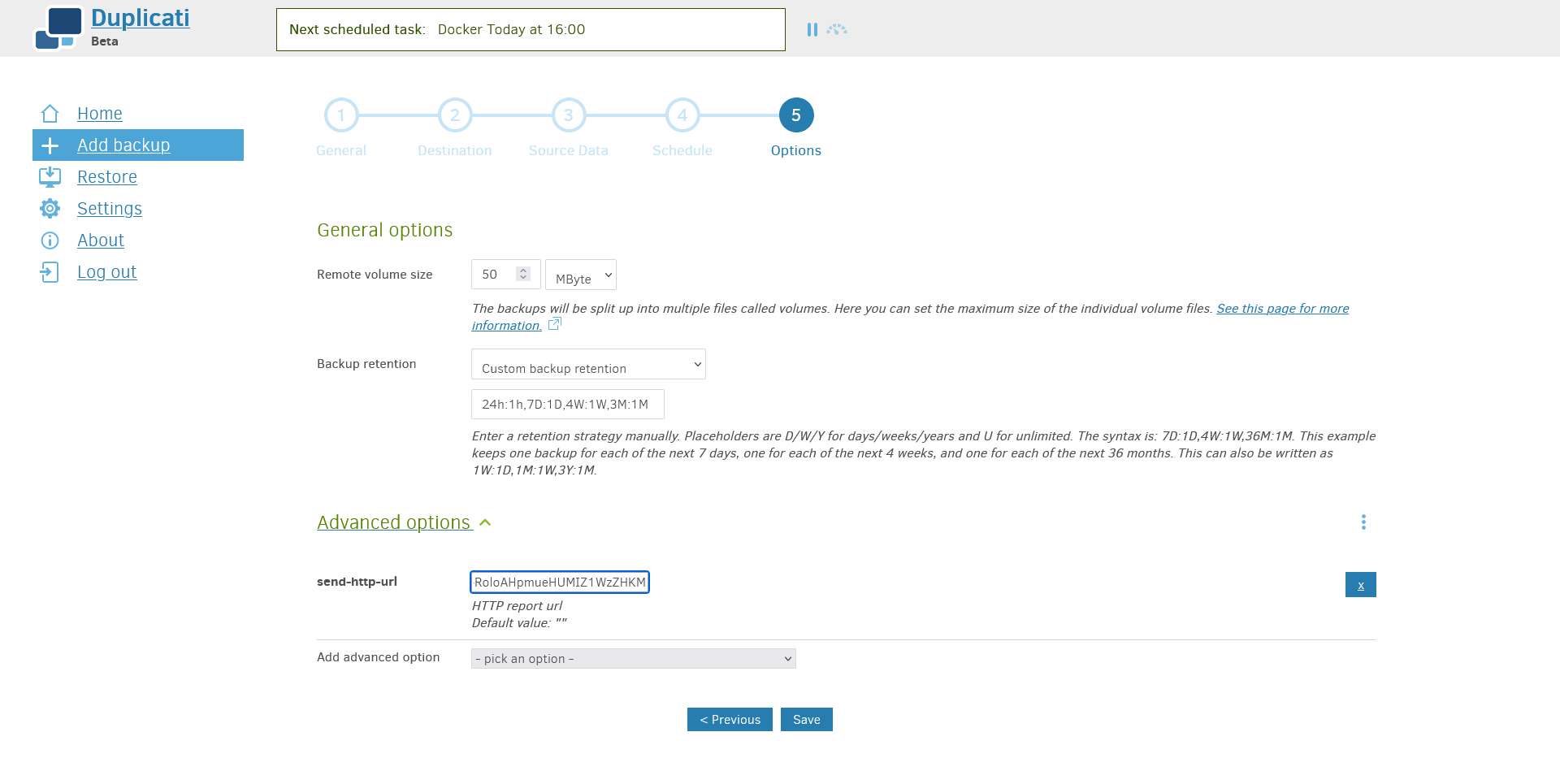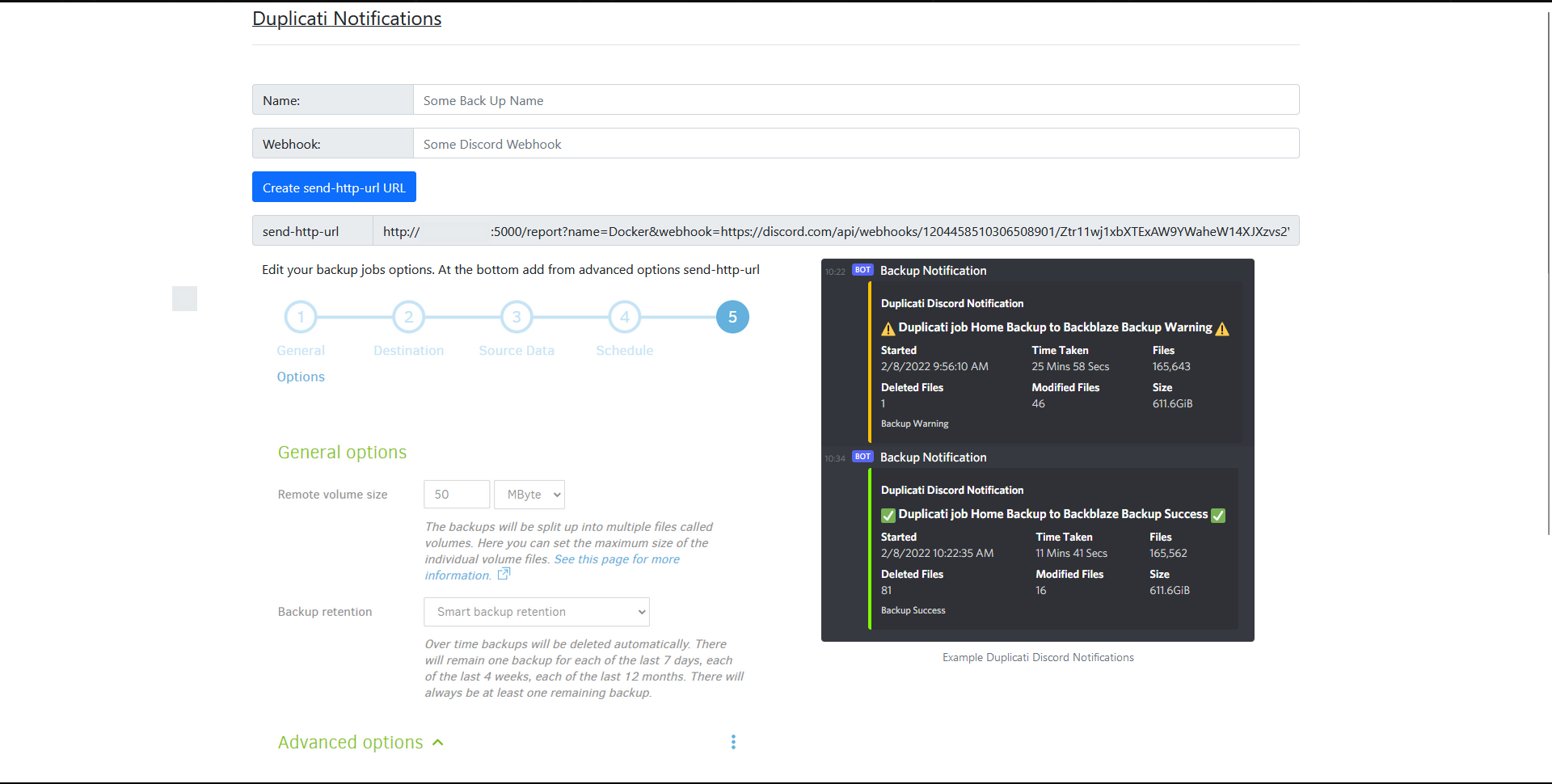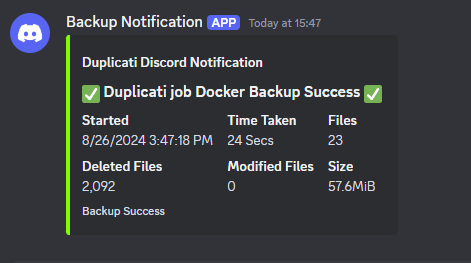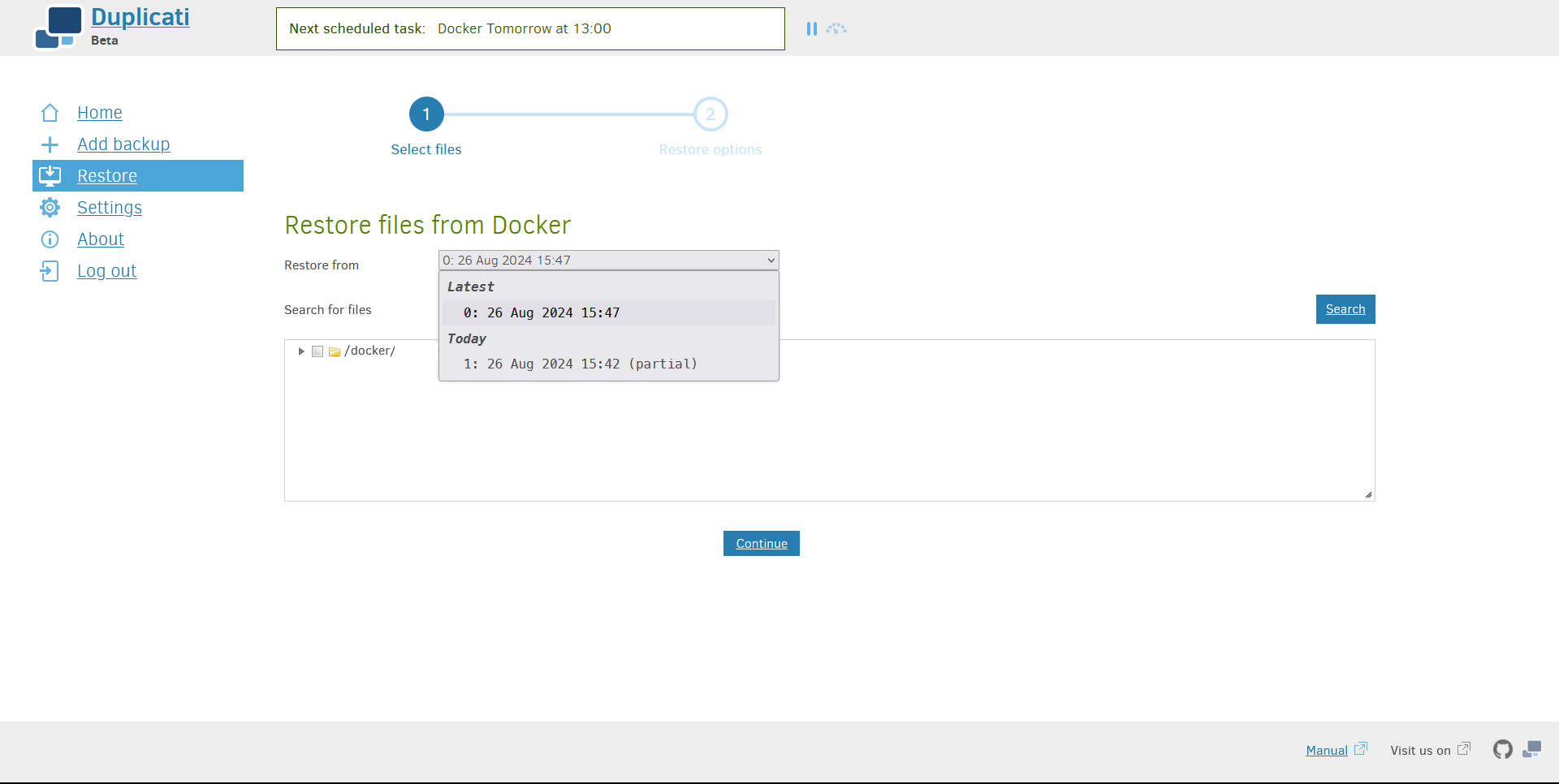Duplicati
Duplicati is a powerful backup solution that supports standard protocols like FTP, SSH, WebDAV, and integrates with popular cloud services such as Microsoft OneDrive, Amazon Cloud Drive & S3, Google Drive, Box.com, Mega, hubiC, and more. What is Duplicati?
Duplicati is an open-source backup software designed for secure and efficient backups. It supports strong encryption, incremental backups, and is highly configurable, making it suitable for both personal and professional use. Core Features of Duplicati
- Incremental Backups: Save time and storage space by only backing up changes.
- Encryption: Protect your data with AES-256 encryption.
- Scheduling: Automate your backup tasks.
- Cross-Platform: Works on Windows, macOS, and Linux.
- Cloud Integration: Seamless integration with major cloud storage providers.
Why Use Duplicati?
Duplicati is ideal for users who need a flexible and reliable backup solution that can be tailored to different environments. Whether you’re backing up data locally or to the cloud, Duplicati ensures your files are secure and easily recoverable.
Prerequisites
- Docker Engine and Docker Compose packages are installed and running
- A non-root user with Docker privileges
Setting Up the Duplicati Server
Create the Directory Structure
To keep things organized, create a dedicated directory for Duplicati. Here’s the file structure:
1
2
mkdir ~/docker/duplicati/data
touch ~/docker/duplicati/docker-compose.yml
1
2
3
4
5
6
7
8
9
10
11
12
13
📂 duplicati
|--📂 data
| |--📂 config
| | |-- CDATXERRIL.backup
| | |-- Duplicati-server.sqlite
| | |-- GSZRNYUBKA.sqlite
| | |-- KYNVCKAOHG.sqlite
| | `-- control_dir_v2
| | `-- lock_v2
| `--📂 scripts
| `-- duplicati-after.sh
`--📑 docker-compose.yml
Docker Configuration
With the directory structure in place, let’s edit the docker-compose.yml file using your favorite text editor. Here’s an example configuration:
1
2
3
4
5
6
7
8
9
10
11
12
13
14
15
16
17
18
19
20
21
22
23
24
25
26
27
28
29
30
31
32
33
34
35
36
37
38
39
40
41
42
43
44
45
46
47
48
49
50
51
52
53
services:
duplicati-notifications:
image: jameslloyd/duplicati-notifications
container_name: duplicati-notifications
restart: unless-stopped
expose:
- 5000
networks:
routevlan:
ipv4_address: $IP
proxy:
duplicati:
image: lscr.io/linuxserver/duplicati:latest
container_name: duplicati
environment:
- TZ=Asia/Kolkata
# - CLI_ARGS= #optional
- PUID=1000
- PGID=1000
volumes:
- ./data/config:/config
- ./data/scripts:/tmp/scripts
- /root/docker:/docker
- /root/script:/script
ports:
- 8200:8200
restart: unless-stopped
networks:
routevlan:
ipv4_address: $IP
proxy:
# Traefik labels can be uncommented and configured if using Traefik as a reverse proxy.
# labels:
# - "traefik.enable=true"
# - "traefik.http.routers.duplicati.entrypoints=http"
# - "traefik.http.routers.duplicati.rule=Host(`test.domain.tld`)"
# - "traefik.http.middlewares.duplicati-https-redirect.redirectscheme.scheme=https"
# - "traefik.http.routers.duplicati.middlewares=duplicati-https-redirect"
# - "traefik.http.routers.duplicati-secure.entrypoints=https"
# - "traefik.http.routers.duplicati-secure.rule=Host(`test.domain.tld`)"
# - "traefik.http.routers.duplicati-secure.tls=true"
# - "traefik.http.routers.duplicati-secure.service=duplicati"
# - "traefik.http.services.duplicati.loadbalancer.server.port=8200"
# - "traefik.docker.network=proxy"
# - "traefik.http.routers.duplicati-secure.middlewares=authelia@file"
# - "com.centurylinklabs.watchtower.enable=true"
networks:
routevlan:
external: true
proxy:
external: true
Verify and Launch the Container
to verify the docker compose files has no issues use docker compose config Once you have the docker-compose.yml file you can run docker-compose up -d which will create the volume, download the image and start the container in the background
To verify the status of all running containers, run the docker-compose command:
1
docker-compose ps (OR) docker ps -a
If something goes wrong, you can check the logs for each container using the docker logs command and specify the service name. For example, to check the log of the Nginx Proxy Manager container, run the following command:
1
docker logs $container (OR) docker compose logs -f
Accessing the Duplicati Dashboard
If all is well, you can locally view your duplicati Server by navigating to http://$IP:8200
Creating a Backup Configuration
In this section, we’ll create a backup for the Docker directory, using SFTP to store the backups on another server.
Configure Backup Settings
Open the Duplicati web interface by navigating to http://$IP:8200. Click on Add backup to start the configuration process.
First, give your backup a name that helps you identify it easily, such as “Docker Directory Backup.” If you want to encrypt your backup, select the encryption option and securely store the passphrase.
Configure Backup Destination
For the storage type, select SFTP since you are backing up to another server. Enter the IP address or hostname of the remote server and specify the directory where you want the backups to be stored (e.g., /home/$user/backup). Provide the SFTP username and password or SSH key for the remote server. This setup ensures that your backups are securely transferred to and stored on the remote server.
Make sure you use the full path on the server (e.g., /home/$user/backup).
Next, navigate through the file browser in Duplicati to select the data you wish to back up. In this example, select the Docker directory. Ensure you use the full path to the directory (e.g., /home/$user/docker). You can include or exclude specific files and folders based on your needs.
Schedule the Backup
Configure the backup schedule to automate the process according to your needs. You might schedule daily or weekly backups, depending on how often your data changes. Additionally, set retention policies to keep only a certain number of backups or delete backups older than a specified time.
Enable Notifications
While Duplicati doesn’t have built-in support for sending notifications to Discord, you can configure the duplicati-notifications container to send notifications upon backup completion. In Duplicati settings, you can configure email notifications or use scripts to trigger custom notifications. Set up duplicati-notifications to integrate with your Discord server, ensuring that you receive a detailed notification about the backup status in your Discord channel.
Run the Backup
Once everything is configured, run the backup to ensure it’s working as expected. Monitor the progress in the Duplicati dashboard and view logs for any issues. After completion, a notification will be sent to your Discord server
Verify and Restore
Periodically, it’s a good practice to verify that your backups are functioning correctly and that you can restore data when needed. Duplicati provides a straightforward restore process, which can be initiated from the dashboard.
For more advanced configuration options, refer to the Duplicati manual.

